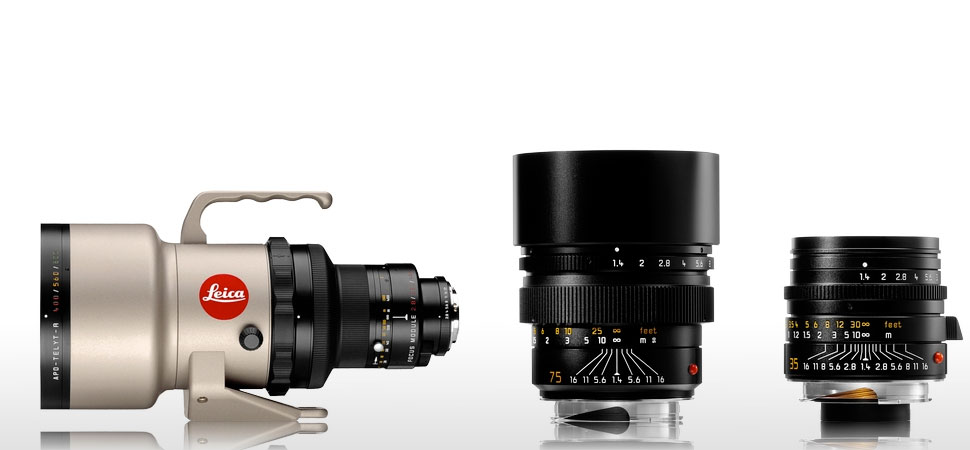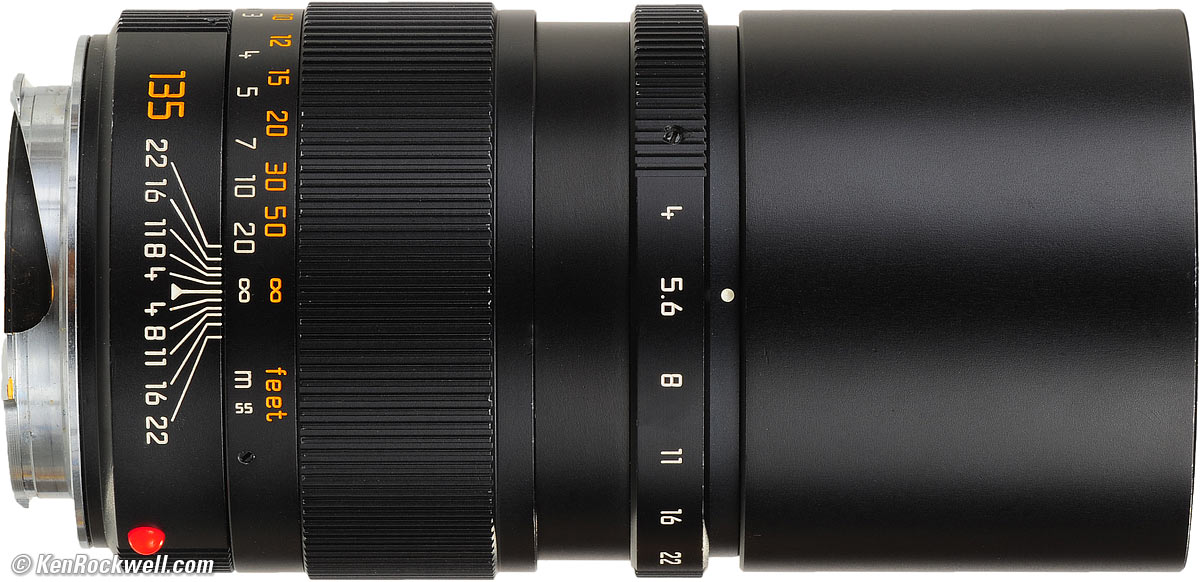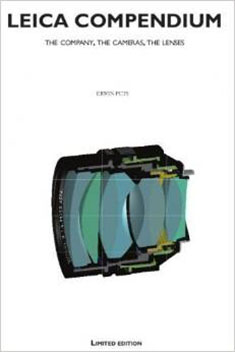Leica 75mm Summilux Serial Numbers
The 75mm Summilux-M f/1.4 is a legendary lens, and it only became more legendary when it discontinued. As it is with most Leica products, that which is no longer available goes up in price. Which naturally leads to the question, 'Should I get one (before it is too late)?' The 75mm Summilux-M was the personal favorite lens of Walter Mandler (in the middle in this photo) The 75mm is recognized by the narrow depth of field wide open. Traditionally 90mm and 75mm lenses have been considered good portrait lenses, most likely because one can isolate the subject from the background. With a tele you isolate the backgrpund with a more narrow angle, and the backgrund appears more solid or flat (whereas a wide angle includes more of the background due to a wider angle, and the backgrpund appears with more details and more distance between them). A real estate manager on his bicycle in my hometown Aarhus, Denmark.

Leica Summilux 75mm f/1.4 Leica APO-Summicron-M 75mm f/2 ASPH Nikkor-S 8.5cm f/1.5 LTM Nikkor-P.C 8.5cm f/2 LTM. In other words, I took many years to look for late serial numbers or the more desirable versions. So for example to many queries: Noctilux is v4 for the f1. MS Optical Sonnetar 50mm f/1.1 MC is silver. Leica 75mm f/1.4 is Made in. Leica 75mm Summilux-M f/1.4 next to Leica 50mm Noctilux-M ASPH f/0.95 and Leica 80mm Summilux-R f/1.4 Which lenses to have In the practicality of daily life where we are often concerned with explaining to our self and others why we have the lenses we have, a 50mm and 75mm will often be considered too close. 31 rows Leica Tech Data; 75mm f/1.4 Summilux-M.pdf - courtesy Summilux.net Erwin Puts (2002).
© 2015 Thorsten Overgaard. This is still true, though the faster apertures of todays 50mm lenses enables us to blur the background with a 50mm lens the same was as you used to use a 90mm lens to do. My take on that is that the isolation of the background (in a portrait) was only possible with small tele lenses (75mm, 80mm, 85mm and 90mm) back in the day when those lenses were not that lightstrong (f/4.0) and their counterpart 50mm lenses captured way too much of the unwanted background being f/2.0 to f/3.5. When I read ' ' by Walther Benser, that is what he states as the new fantastic possibility with the 90mm lenses back in the 1940s. The ability to isolate the subject from the background. Walther Benser worked for Leica for many years, and I think the term 'portrait lens' is more of a marketing term than a 'rule of correct photography'. Hollywood, August 2015.
In other words, my perception of a good portrait lens is one that allow me to isolate the subect from the bacground. The main subject is the person, the background can be gone, a beautiful bokeh, a vague supporting story, sparkling blur or a painting of intersting colors that set a mood. Composition is storytelling. It is what is relevant for the story, and for a portrait the story is most often the person. The background will disturb if it is too dominant, unless the background is in fact part of the story one want to tell. Buy the new eBook 'The Freedom of Photographic Expression' by Thorsten Overgaard 'The Freedom of Photographic Expression' eBook for computer, Kindle and iPad October 2016 (268 pages) In this easy to read and apply eBook, Thorsten Overgaard takes beginners and experienced photographers through the basics of controlling the light and the camera. This book covers the technical side of photography from beginners level to semi-pro, features a number of photographs by Thorsten Overgaard and chapters on his philosophy on photography.
Only $148 Buy Now Instant Delivery 'I've bought the new book - made a start reading it - it is really interesting. I know it’s basic at the beginning but it isn't written in a patronizing way. I have been taking photographs for many years and have been lucky enough to be paid to take them for the last seven years; but it's always good to be taken back to the start' P.
Leica Summilux M 50mm
(UK) ' 'Really enjoy your writing and teaching' D. (USA) 'I love your insights on photography.' (USA) ★ ★ ★ ★ ★ ★ A moment of solitude in my local cafe.
© 2015 Thorsten Overgaard. I'm sure some will sit more upright in the chair reading these words. And perhaps that is why I say so. It's good to be challenged in ones viewpoint and try something else and re-think how things can be done. Somebody told me to use the Leica 21mm Summilux-M ASPH f/1.4 for portraits, so I did.
I don't know if I agreed with the person after that, but was interested to learn why he would recommend that, and in the end I did learn something that was useful by using a wide angle with narrow depth of field for portraits. It made me interested, gave me some hard days with my eyes wide ipen, and finally paid off with something that.

Shall we say it was a combination of how I knew it had to be done, meeting how 'everybody knows' it shouldn't be done. Something new got to be the result of that melting pod. One of my recent 21mm portraits with the Leica 21mm Summilux-M ASPH f/1.4. Obviously the background is very 'busy' but could then be part of the story you want to tell. The wide open aperture of f/1.4 allow me to make the 'busy' background into a dreamy effect.
The same portrait as it could have looked with a 90mm lens. The crop changes and there is less background to deal with. Isolation of the subject is just so much easier with tele lenses, traditionally. If that is what you seek. Today, a 50mm f/1.4 or f/0.95 will isolate the subject quite as well as a 90mm once did. Hence, one might as well use a 50mm lens for portrait.
If not for anything else, becaues it is versatile and thus often sits on the camera. At least that is what I mostly do despite that I have the very good in my bag as well. If you wonder what I am talking about, it is this: A 90mm lens has a more narrow depth of field than a 50mm.
And a lens with a wider aperture has a narrow depth of field. If you mix it up, a 50mm f/1.4 will have as much narrow depth of field as a 90mm f/2.0. The angle of view is more narrow for the 90mm, and maybe you will want that. Or maybe you will work around that potentially busy background to use the 50mm instead. British actress.
With Leica 75mm Summilux-M f/1.4 If we think back to the 85mm Summarex f/1.5 in 1943 we have both a small tele lens with a narrow depth of field, and a wide aperture which makes the narrow depth of field even more narrow. Fast-forward to 1980 - 37 years of lens technology and better contrast due to better light control - we get to talk about the 75mm Summilux-M f/1.4 with an extremely narrow depth of field and a very high quality of contrast, colors and details.
Leica 75mm Summilux f/1.4 A 75mm f/1.4 has as narrow a depth of field as a or which is why the relevant question is if it is actually the same as a Noctilux? To add to the confusion, the recent introduction of the Leica M 240 that takes Leica R lenses opens up for a another possibility of getting that special Leica look with narrow depth of field: The! I may not clarify what to do, but hopefully I can help clarify the choices you have! With Leica 75mm Summilux-M f/1.4.
I like the colors in this one which is actually a crop of the original (see the bottom of the page). 'Being Ben Affleck' we called this image, though it is guitarist/photographer Michael Swisterski. He is used to be 'recognized' as 'the famous guy'.
Perspective and depth of field I have on my list to do an article one day that explains depth of field and perspective. In short, one could say that perspective and depth of field is the same for all lenses and all apertures. It's the crop(and anlargment) that changes when you change lens. One can take a 18mm lens and if one crop into the middle, the image one will be looking at will be the same as a 400mm lens would make.
That is the simlicity of this. As far as perspective and aperture goes, it is something you can put into a calculation and it will stick. What you can't put into a calculation is the individual charasteristics of lens designs (which is reason for 'the Leica glow' in essence). But perhaps the largest factor in what lenses and cameras produce the best images is this: What the user feels he or she can make with a certain instrument. If you are convinced that a Nikkor 50mm f/1.2 is the best lens ever, it is. If you are convinced it is the worst lens ever, it will be. One of the factors why a certain lens is great, is that I have decided so.

As the photorapher and not the camera makes the photographs, being convinced this is the right instrument, is a very important factor. A duck family at my house in Denmark, July 2015. The favorite lens of Walter Mandler The 75mm Summilux-M was designed in 1980 and accompanied the then brand new Leica M4-P. It is said to be the favorite lens of legendary lens designer Dr Walter Mandler (1922-2005) who designed it.
He also fathered the Leitz 50mm Noctilux, so that puts things into perspective. One could wonder why it was his favorite lens. What things fell in place in this lens that made him like it that much?
I think he had a lot of elements to be proud of. Colors, details, sharpness, as well as an extremely elegant handling of light. And when I say extremely elegant, I am referring to when precise lenses become magic in the sense that they look like a naturalistic painting done by one of the great masters. Few want a lens that reproduces precisely what is. No, what we really want is a lens that reproduces reality so the beauty is amplified and the errors are erased.
Like a painter would choose which things to amplify and which to blur. It's a fact that the lens was so perfect that whilst many other lenses were redesigned in the 27 years of the 75mm Summilux regency, the 75mm Summilux-M continued with the same unchanged design all 27 years untill it was discontinued in 2007. Though the lens mount inside the lens was made 40 grams lighter when the lens production was moved from Canada to Germany in 1998. The Leica M4-P(rofessional) of 1981 was begging for some high-speed lenses. Here with a motor winder on the bottom and the Leica 50mm Noctilux-M f/1.0 that had come out just four years earlier, and the Leica 75mm Summilux-M that came almost at the same time as the camera. The German and the Canadian versions The Leica 75mm Summilux-M exists in three versions which are essentially not different - photographically speaking. The lens design itself is exactly the same.
But the first version (1980-1982; Model 11 814) is with a ventilated hood attached. And then two years after the introduction, the lens was redesigned with a built-in lens hood (Model 11 815). The weight increased a tiny bit by this redesign of the lens barrel that had to fit the lens hood. But that is all.